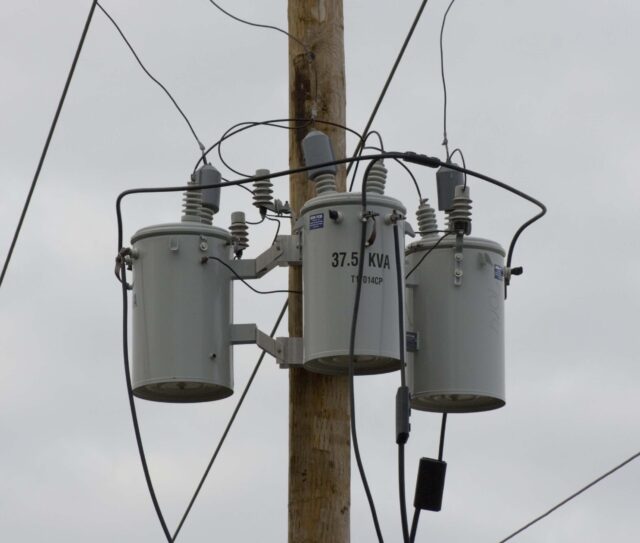So, you’ve heard the single terms phase’ and ‘three-phase,’ but what exactly do they mean? What’s the difference between a single-phase and a three-phase power supply?
What is the difference between single-phase and three-phase testing?
In our most recent piece, we address all of your concerns. We are electrical testing professionals at Jim’s Test & Tag. Allow our experienced staff to handle all of your testing needs. Don’t hesitate to contact us if you have any additional pressing inquiries concerning our industry. We’d be delighted to discuss them in our future blog article.
Single-phase Vs. Three-phase
Because they are not the same thing, it isn’t an issue to think about three-phase vs. single-phase. Single-phase and three-phase AC power supply systems are two different AC power supply systems. Single-phase is most common in houses and residential areas, whereas three-phase is used in places that require greater power, such as industrial buildings and enterprises.
There is just one neutral wire and one power wire in single-phase power systems via which current flows. In a three-phase system, the load is carried by three power cables. A single-phase system features peaks and troughs in power that alter during the cycle due to its structure. A three-phase system is more stable and capable of carrying a higher load.
Three-phase electricity can be found in the following areas:
- commercial buildings
- data centers
- telecommunication towers
- power grids
- ships and aircraft
Single-phase electricity is used in nearly all residences. There are a few techniques to figure out which phase you’re in if you’re not sure:
- Look in your fuse box for a black rectangular fuse – a single phase has one, three-phase has three (you guessed it).
- There is usually only one primary switch in single-phase units, whereas three-phase units have three.
Read More: Why Do My Lights Flicker And How We Can Stop Them
What is the difference between single-phase and three-phase appliances?
Some appliances demand extra power, which necessitates using a three-phase circuit. Even though they consume a lot of power, most household appliances are meant to be used in the home and may thus operate on a single-phase circuit. Commercial and industrial locations are likely to have appliances that require a three-phase system. These are some of the appliances that might use this much power:
- generators
- industrial cleaning equipment
- motorized equipment
- heating and cooling
- stoves and cooking equipment
Appliance and Equipment Testing
The AS/NZS3760:2010 standard must be followed for all appliance testing. While an earth continuity and insulation test can identify single-phase earthed appliances as safe, all three-phase appliances require additional leakage tests to assure optimum safety. Our specialists utilize portable appliance testers that may be used on single-phase or three-phase appliances.
The distribution of a load is referred to as the phase-in electricity. What is the difference between a three-phase and a single-phase power supply? A two-wire alternating current (ac) power circuit is called single-phase power. One power wire—the phase wire—and one neutral wire are usually present, with current flowing between the power wire (via the load) and the neutral wire. A three-wire ac power circuit with each phase ac signal 120 electrical degrees apart is called three-phase power.
Single-phase electricity is often used in residential houses, whereas three-phase power is used in commercial and industrial establishments. One significant distinction between single-phase and three-phase power supplies is that a three-phase power supply can handle larger loads. Single-phase power supplies are most typically employed when typical demands are lighting or heating rather than massive electric motors. Three-phase systems can be converted to single-phase systems. In the United States, a transformer is used to obtain the necessary voltage, however, in the European Union, it is done directly. In the European Union, voltage levels are such that a three-phase system can alternatively function as three single-phase systems.
Single-phase vs. three-phase power
Another significant distinction between 3-phase and single-phase electricity is the constancy of power supply. A single-phase power source cannot match the constancy of a three-phase power supply due to voltage peaks and troughs. A three-phase power supply provides power at a consistent, steady pace.
When single-phase and three-phase power supplies are compared, three-phase power sources are more efficient. A three-phase power supply can transport three times the amount of power as a single-phase power supply while just adding one cable (three wires instead of two). As a result, three-phase power supplies utilize less conductor material to carry a given quantity of electrical power than single-phase power supplies, whether they contain three or four wires.
What’s the difference between a three-phase and a single-phase system?
A fourth wire, called a neutral wire, is used in some three-phase power supplies. Wye and delta are the two most frequent layouts for three-phase systems. There are three wires in a delta arrangement, but a wye layout may contain a fourth neutral wire. A neutral wire is also included in the single-phase power supply. Power distribution systems, both single-phase and three-phase, have tasks that they are well-suited for. The two sorts of systems, however, are vastly different.
Conclusion
A three-phase power supply is more efficient than a single-phase power supply. Three-phase power supplies transmit three times as much power as single-phase power supplies with only one additional wire (i.e., three instead of two). Three-phase power supplies use less conductor material than single-phase power supplies to send a set amount of electrical power, regardless of whether they have three or four wires.







